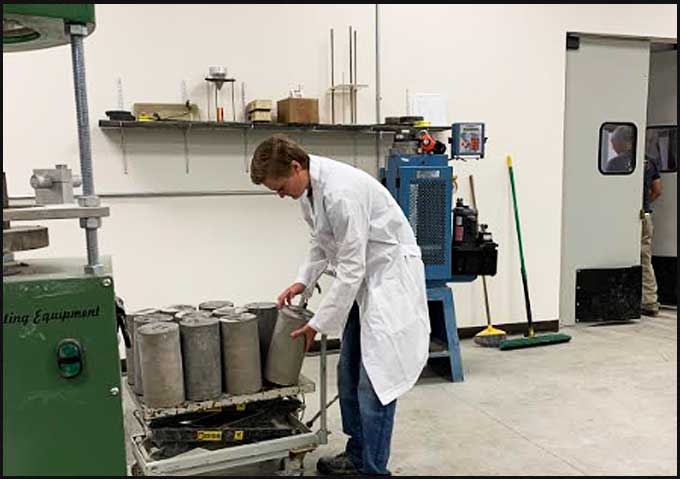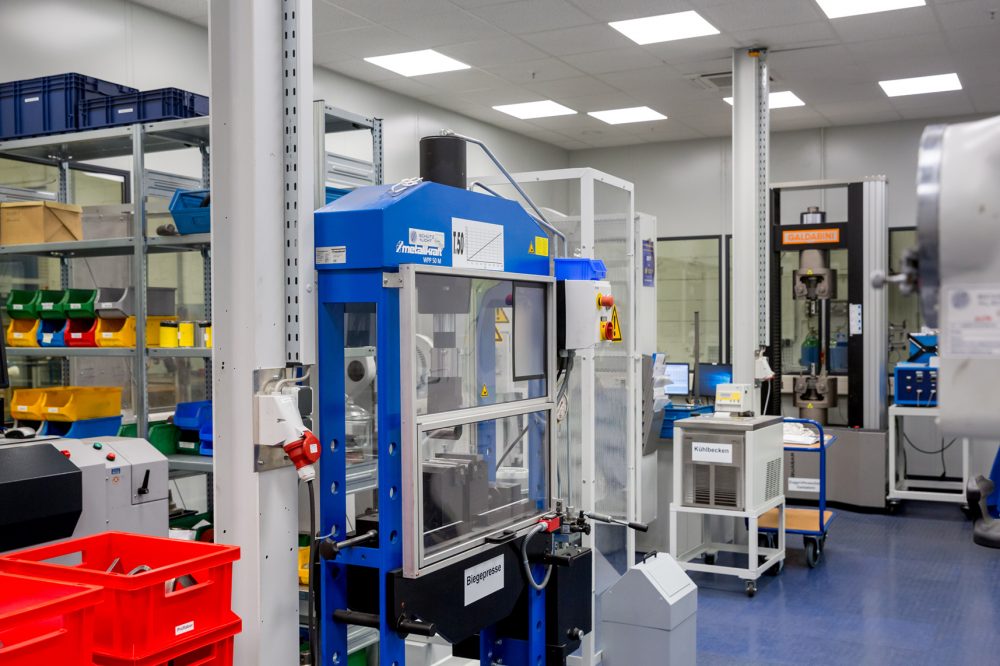Strategic Material Testing Lab Providers: A Keystone of Task Success
Strategic Material Testing Lab Providers: A Keystone of Task Success
Blog Article
Delving Into the World of Product Screening and Evaluation
Material testing and analysis plays a critical role in various industries, from manufacturing to building and construction. It entails a systematic exam of numerous products to determine their buildings, efficiency, and dependability. By employing a series of strategies, such as devastating and non-destructive examinations, experts have the ability to reveal valuable understandings regarding the habits and characteristics of materials. Moreover, the devices made use of in material screening have actually progressed considerably, enabling designers and scientists to gain a deeper understanding of the products they deal with. In this discussion, we will explore the value of material screening, look into usual methods and devices, review applications throughout markets, and highlight emerging fads that are shaping the future of this area.
Importance of Product Testing
Material testing is an essential element of the engineering and manufacturing industries, ensuring the top quality, integrity, and safety of materials made use of in different applications. The relevance of product testing can not be overstated, as it plays a pivotal duty in guaranteeing the performance and long life of products and structures.
Among the primary reasons for performing material screening is to analyze the mechanical homes of materials. This consists of determining their toughness, flexibility, sturdiness, and solidity. By subjecting products to various mechanical examinations, designers can properly review their viability for particular applications and ensure they meet the required specs and standards.
One more vital aspect of product testing is the recognition of possible defects or imperfections. By utilizing non-destructive screening techniques such as ultrasonic testing or visual assessment, producers can find any flaws that can compromise the architectural stability or performance of the products. This helps in protecting against costly failings, mishaps, and possible responsibilities.
In addition, material screening also enables for the examination of product actions under different ecological conditions. Aspects such as temperature, humidity, and corrosive settings can significantly affect the performance and life expectancy of materials. By subjecting them to environmental testing, engineers can assess their resistance to such conditions and make educated choices concerning their suitability for details applications.
Typical Methods in Material Analysis
Various techniques are commonly used in the evaluation of products to establish their properties and characteristics. These techniques play an important duty in comprehending the actions and efficiency of materials in different applications.
Another commonly made use of method is spectroscopy, which involves the communication of materials with electromagnetic radiation. Infrared spectroscopy can identify the functional groups existing in a product, while ultraviolet-visible spectroscopy can determine its optical buildings. X-ray diffraction is one more effective strategy that enables researchers to analyze the crystal structure of products and identify their stages.
Thermal evaluation is likewise commonly utilized to study the thermal habits of materials. Differential scanning calorimetry, as an example, can determine the melting factor and warmth capacity of a product, while thermogravimetric analysis can measure its weight loss as a function of temperature level.
Furthermore, mechanical screening is vital to understand the mechanical homes of products. Techniques such as tensile screening, firmness testing, and effect screening supply beneficial info regarding a material's toughness, durability, and stiffness.
Tools Used in Product Testing
A variety of specialized instruments and tools is utilized in product screening to accurately analyze the homes and habits of various materials. These tools are critical for carrying out experiments and getting reliable data in numerous sectors, including aerospace, automobile, building and construction, and manufacturing.
One of the most typical tools used in material testing is the global screening maker (UTM) Another necessary tool is the solidity tester, which establishes a product's resistance to indentation or infiltration.

Additionally, thermal analysis tools, consisting of differential scanning calorimeters (DSC) and thermogravimetric analyzers (TGA), are utilized to explore the thermal residential properties and actions of products, such as melting points, glass transitions, and decomposition temperatures.
Applications of Material Testing and Analysis
To totally use the important information obtained through making use of specialized tools and tools in product testing, it is important to explore the wide variety of applications where this analysis can be used. Product testing and evaluation play a crucial role in numerous sectors, including aerospace, auto, building, and manufacturing.
In company website the aerospace sector, product testing and evaluation are made use of to ensure the safety and dependability of aircraft components. material testing lab. By subjecting products to severe conditions, such as high temperature levels and stress, designers can evaluate their efficiency and make educated choices regarding their suitability for usage in aircraft
In the automobile market, material testing and analysis are employed to enhance the durability and performance of vehicles. By evaluating the homes of various products, suppliers can establish stronger and lighter elements, causing improved fuel efficiency and total vehicle efficiency.
In the construction industry, product screening and evaluation are used to make certain the architectural stability of buildings and framework - material testing lab. By evaluating the toughness and sturdiness of building and construction products, designers can create structures that can hold up against different lots and environmental problems, guaranteeing the safety and security of owners
In the production industry, product screening and analysis are vital for top quality control objectives. By examining the homes of basic materials and finished products, producers can identify any type of issues or weaknesses, allowing them to make necessary improvements and provide high-quality products to customers.
Future Trends in Material Screening and Evaluation
Arising technologies are improving the field of material screening and analysis, changing the method sectors maximize the efficiency and examine of products. As modern technology proceeds to advancement, brand-new trends are arising that are expected to even more boost the capacities of material screening and analysis.
Among the vital future patterns in material screening and analysis is making use of fabricated intelligence (AI) and artificial intelligence (ML) formulas. These modern technologies can aid in automating the evaluation process, enabling faster and extra accurate results. AI and ML can likewise help in identifying patterns and patterns in huge datasets, making it possible for researchers to make more informed choices.
An additional fad is the advancement of innovative non-destructive screening (NDT) techniques. NDT methods, such as ultrasonic screening and thermal imaging, are ending up being a lot more sophisticated, permitting the discovery of flaws and defects in products without the need for have a peek at this site harmful testing. This not just conserves time and sources but likewise makes certain the stability of the examined products.
Moreover, there is an expanding interest in nanotechnology and its effect on material screening and evaluation. Nanomaterials exhibit unique residential properties that vary from their bulk counterparts, and specialized methods are being developed to analyze and characterize these products at the nanoscale.
Verdict
In final thought, product screening and analysis is an essential element of various industries and research areas. As technology proceeds to breakthrough, future trends in material testing and analysis are anticipated to even visit this web-site more improve accuracy, effectiveness, and innovation in this field.

Report this page